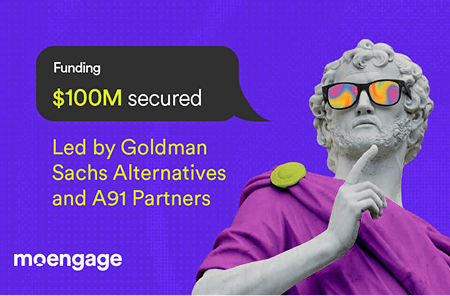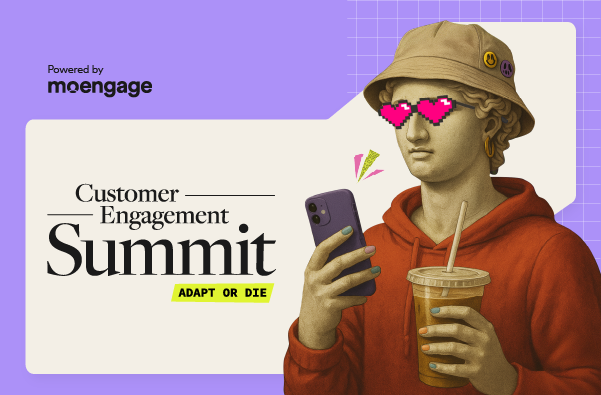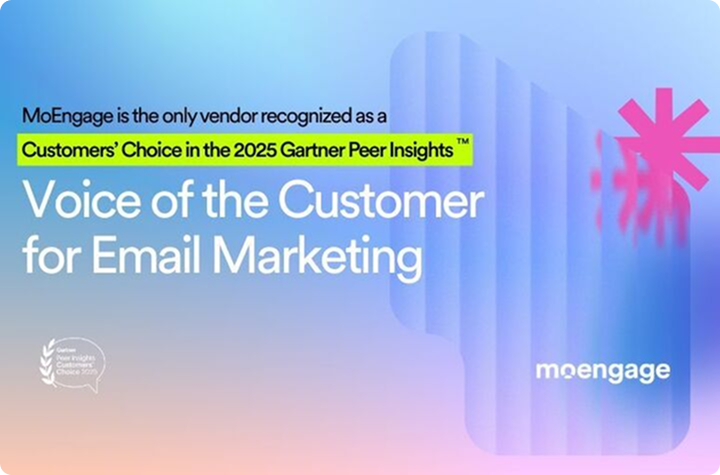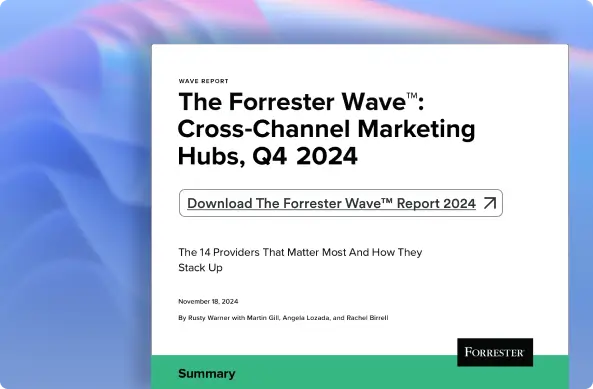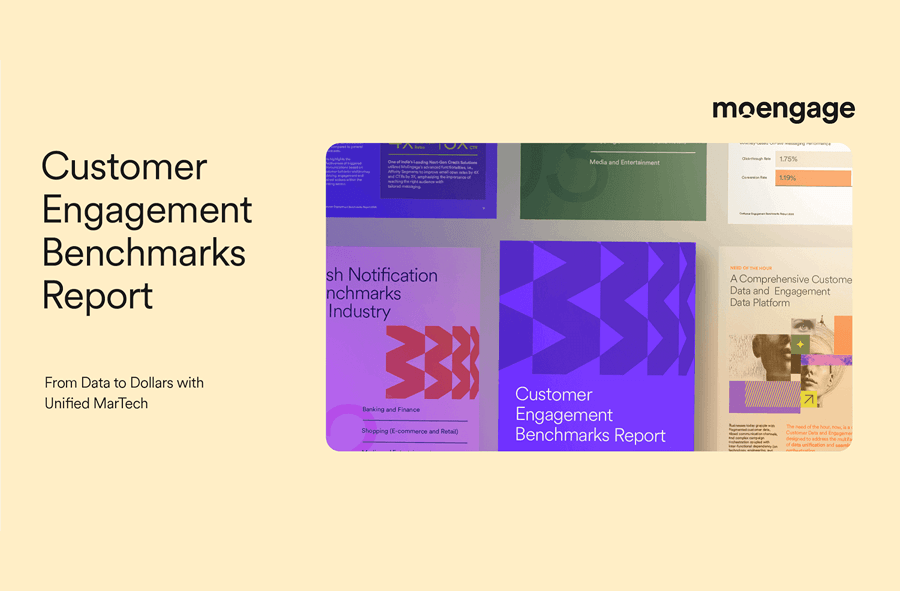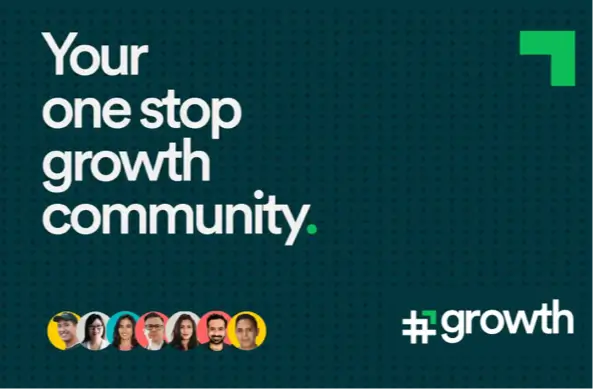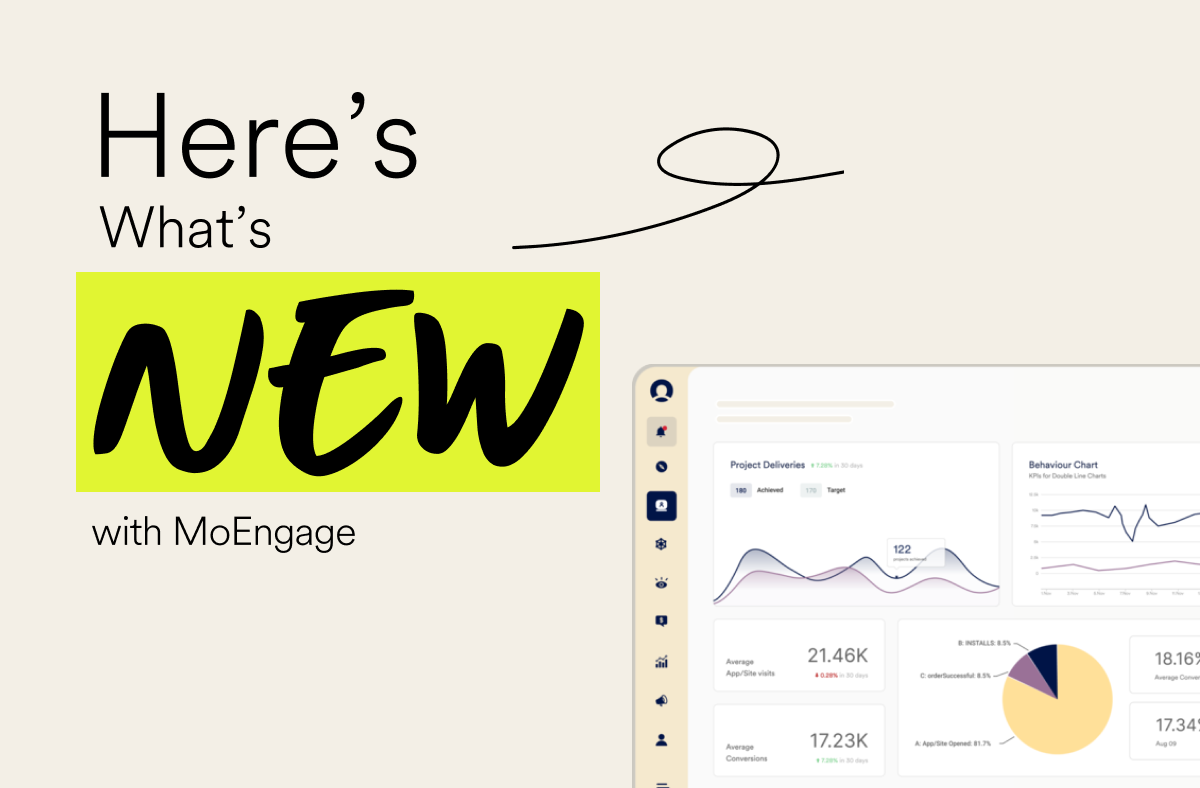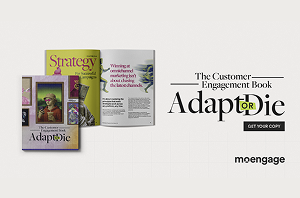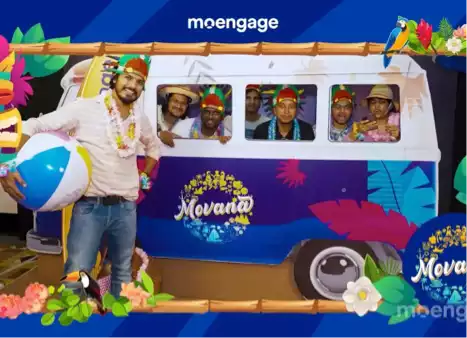How to Improve Customer Loyalty: Your Complete Guide
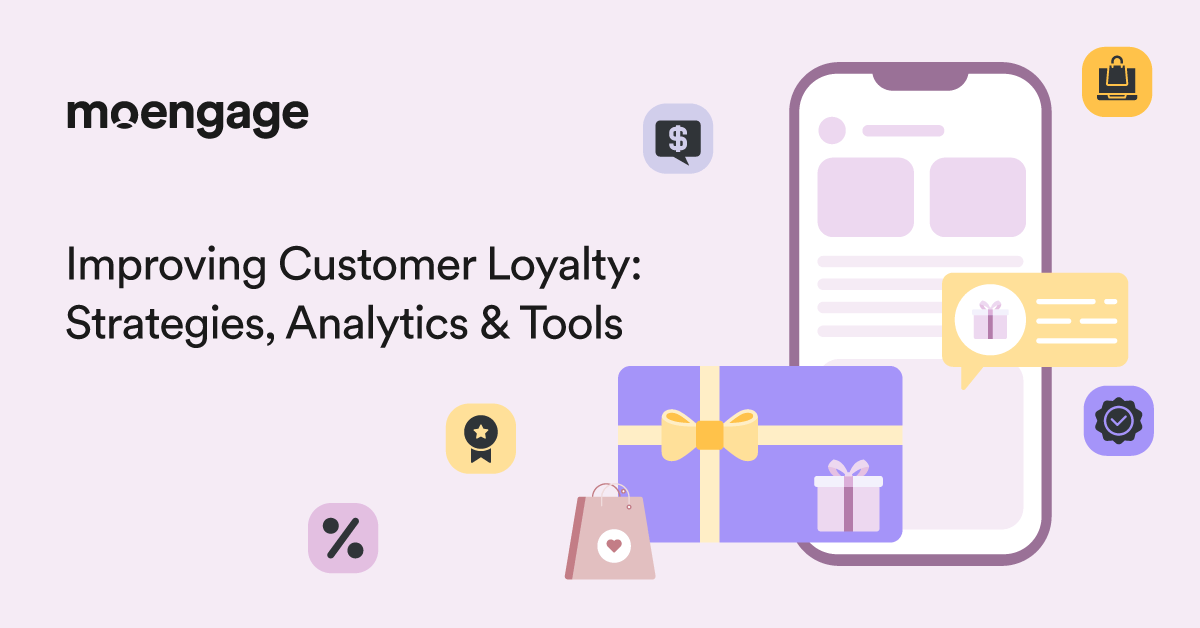
Customer loyalty in marketing is never just a number on a report. It shows up when a customer keeps returning even though there are cheaper, louder options waiting outside. Sometimes it’s a habit, sometimes it’s the memory of a good interaction that felt easy, instead of transactional.
Brands spend heavily chasing new buyers, but the quiet work of keeping the ones they already have is what separates a stable brand from one that burns out.
Discounts and clever ads may help for a season. Yet, the deeper pull for loyal customers often lives in smaller gestures: a problem solved without much ado, or a familiar tone in a customer relationship email. Such moments matter more than most marketing teams realize.
This blog explores how customer loyalty grows, why it slips away, and the ways marketing can shape it without turning it into a hollow slogan.
What is Customer Loyalty in Marketing?
Customer loyalty in marketing is the ongoing effort to retain customers and encourage them to speak positively about a brand. It means shaping offers, customer service, and messaging, so a buyer chooses the same company again and shares that preference with their connections, reinforcing trust over time.
For marketers, loyalty is more of a living practice than a single program. It grows when teams use customer data to guess what someone might need next and follow through on the small promises made in every re-engagement email, ad, or chat reply. The tone stays steady across channels even when campaigns change.
Done well, this approach lowers the cost of finding new customers, keeps revenue from swinging too wildly, and builds a group of customers who keep mentioning the brand long after a specific promotion has ended.
Why is customer loyalty important in marketing?
Customer loyalty matters in marketing as it turns occasional buyers into steady supporters. Loyal customers spend more, stay engaged, and share their experiences with their network. This steady advocacy makes every marketing effort more efficient and lowers the cost of winning new customers over time.
Most marketing teams spend a lot of energy chasing new customers, flashy campaigns, or the next viral idea. That’s fine, but it misses the quieter, slower work that really builds a brand. Loyal customers matter because:
- They come back without needing constant persuasion, saving you time and money.
- They share their experiences with friends and family, giving your brand credibility that money can’t buy.
- They respond better to offers and campaigns because there’s already trust in place.
When you focus on customer loyalty in marketing, you’re not just keeping customers, you’re creating advocates, stabilizing growth, and making every interaction count in ways that chasing new faces rarely can.
What is the difference between customer satisfaction and customer loyalty?
Customer satisfaction measures how satisfied a customer is with their overall brand experience, while customer loyalty indicates whether they continue to prefer the brand over time. Loyalty grows through consistent value, positive experiences, and emotional connections that make the brand their choice again and again.
Think of it this way: a customer can leave a store satisfied with a quick purchase, but never return. Loyalty, on the other hand, is built over time through consistent experiences, trust, and meaningful interactions. Marketing focuses on loyalty because it drives repeat behavior, advocacy, and long-term revenue, not just a one-time positive feeling.
Customer satisfaction plays a key role in this process. Each positive omnichannel customer experience lays the groundwork for loyalty, showing customers that the brand delivers value and meets their expectations. Satisfied customers are more likely to return, explore more products or services, and gradually develop a preference for the brand, which over time turns into genuine loyalty.
What is the most direct cause of customer loyalty?
The most direct cause of customer loyalty is consistently meeting or exceeding expectations in ways that matter to the customer. High-quality support, personalized interactions, and low-effort experiences all reinforce trust. When customers feel valued, they return and recommend the brand over time.
It’s rarely one single thing that keeps customers coming back. What drives customer loyalty is often a mix of reliable service, quick responses, and small personal touches that customers actually notice. A fast solution to a problem, a thoughtful recommendation, or an effortless personalized customer experience. These moments build up over time and start shaping real preference for a brand.
That’s also why understanding what is the most direct cause of customer loyalty matters. When brands anticipate customer needs and consistently deliver value, satisfaction gradually turns into genuine loyalty. This is the kind that keeps customers returning and sharing their experiences with others.
What is a Customer Loyalty Program & How Does it Work?
A customer loyalty program is a system brands use to reward repeat customers and encourage continued engagement. It works by tracking purchase habits, offering exclusive rewards, and creating reasons for customers to return rather than switch to competitors, building long-term loyalty over time.
Most customers think of loyalty programs as points or discounts. That’s part of it, but not the whole story.
At its heart, it’s about nudging a customer to return and making them feel noticed along the way. Programs usually include things like:
- Tracking purchases and interactions: Seeing what customers actually value.
- Rewarding repeat behavior: Points, perks, exclusive offers, and early access.
- Encouraging engagement: Personalized messages, reminders, tiered benefits.
- Building emotional connection: Making customers feel genuinely recognized.
Done right, a customer loyalty program instills trust and habit, turning satisfied buyers into advocates who actively choose your brand again and again.
7 types of customer loyalty programs
Customer loyalty programs are not one-size-fits-all. Brands pick different approaches depending on what fits their business, what customers care about, and how they want customers to interact.
Some programs are obvious, some are complicated, and some barely register until a reward shows up. Knowing the types of customer loyalty programs helps marketers figure out how to build loyalty that actually lasts.
- Points-Based Programs: This is the one most customers think of first. Customers earn points for every purchase, whether through customer loyalty cards, mobile apps, or registered accounts, then redeem them for discounts, products, or perks. It works because customers see progress. Watching points grow feels rewarding, and it nudges them to return. If earning or using points is tricky, interest quickly fades.
- Tiered Programs: These create levels, like silver, gold, or platinum. The more someone spends or engages, the higher the tier and the better the benefits. Recognition and status matter here. Customers like being part of an “in” group. But if tiers feel hollow or meaningless, they don’t motivate long-term loyalty.
- Paid or Subscription Programs: Some programs require payment upfront for perks, like Amazon Prime. Customers get free shipping, early access, or exclusive deals. Commitment is stronger when customers pay, and spending often rises. Still, success depends on real value; if benefits feel weak compared with costs, the program fails.
- Cashback and Discount Programs: Cashback gives back part of a purchase, in money, points, or store credit. Discount programs reduce prices directly. These are simple and appeal to customers who respond to immediate value. But balance is key. Too generous, and margins suffer. Too stingy, and customers lose interest fast.
- Experiential or Engagement-Based Programs: Not all loyalty is financial. If you go through customer engagement examples, some programs reward engagement: reviews, social shares, and attending events. They focus on connection, not transactions. Emotional loyalty often lasts longer than cash incentives because customers feel involved with the brand, not just buying from it.
- Coalition or Partner Programs: Several brands team up to offer shared rewards. Customers earn points or perks across a network. It works because spending feels more valuable, and brands get exposure to new audiences. Tracking any relevant partnerships is essential. Mess it up, and customers get confused.
- Refer-a-Friend Programs: These reward customers for bringing in new buyers. Both the referrer and the new customer usually get something, including points, discounts, or a bonus. It works because customers trust friends more than ads. Done right, it spreads loyalty naturally while reinforcing the bond with the brand.
Each type has pros and cons. Some appeal more to transactional buyers, others to emotionally invested customers.
The most effective customer loyalty programs mix the different types of programs: points, tiers, experiences, and engagement. That helps customers feel rewarded in several ways. Marketers who understand which type suits their audience stand a better chance of building loyalty that sticks and grows over time.
Top 6 benefits & advantages of customer loyalty programs
Customer loyalty programs are now more than just perks. They’re tools that help brands keep customers while giving them reasons to stay engaged. Rewards, personalized experiences, and exclusive access all play a role, but it’s the ongoing relationship that counts. Here are the key advantages of customer loyalty programs:
- Increased Customer Retention: A customer loyalty program helps reduce churn by giving customers reasons to stay. This is the foundation of effective customer retention strategies. Emotional and financial incentives matter here. They tap into basic psychology, like loss aversion, so customers feel invested in the brand rather than tempted to try a competitor.
- Higher Revenue Per Customer: Programs also drive measurable financial results. Companies with strong loyalty initiatives often see an average ROI of 4.8X. That comes from customers buying more often, spending more each time they buy, and responding to member-only promotions that push extra purchases.
- Enhanced Customer Data and Insights: Customer loyalty programs are also powerful data engines. They capture first-party information on behavior and preferences, which marketers can use to segment, personalize, and run more effective campaigns, especially as privacy rules tighten.
- Improved Customer Lifetime Value: The global loyalty management market hit $12.07 billion in 2024 and is expected to reach $20.44 billion by 2030. That growth reflects how customer loyalty programs extend relationships, keep customers engaged, and increase their long-term spending.
- Stronger Brand Advocacy: Happy loyalty members often become natural brand ambassadors. They refer your brand to their connections, leave reviews, and post on social media. All this happens at a lower acquisition cost than traditional advertising.
- Competitive Differentiation: Finally, well-designed programs offer more than just a lower price or special features. They create emotional connections through exclusive access, personalized service, and special recognition that competitors find hard to match.
Customer Loyalty Strategies: How to Create, Increase, and Maintain
Customer loyalty doesn’t happen automatically. You can launch a shiny program, send a few emails, and hope for the best, but that’s not enough. Creating loyalty takes work, and increasing it is trickier. But maintaining it over time? That’s the real challenge.
The distinction between customer loyalty vs. retention becomes important here. It’s a process: first, you get a customer to return, then you deepen that connection, and finally, you make sure it lasts through ongoing customer engagement strategies.
How to create customer loyalty with a new program
Starting a customer loyalty program begins with paying attention to your customers. What do they like? What keeps them coming back? The program should offer rewards that feel worthwhile and be easy to use.
When these small things are done consistently, they build habits, trust, and relationships that last. Here are the steps to create a program that actually works.
1. Start by knowing your customer
You can’t expect loyalty if you don’t understand what matters to someone.
Use MoEngage’s Recency, Frequency and Monetary Value (RFM) analysis and affinity segments to see which customers buy most often, spend the most, and prefer certain products or categories. These insights can help shape program tiers, messaging, and rewards that actually resonate with your customers.
2. Set clear goals and map them in your dashboards
Are you aiming for more repeat purchases? Bigger baskets? Referrals? Engagement?
Setting clear goals helps design the program and measure success. Without clearly-mapped out goals, even a well-crafted program can fizzle.
That’s why you need to map KPIs directly in MoEngage Analytics. Watching redemption rates, engagement trends, and repeat purchase timelines in one place makes it easier to track progress and pivot quickly.
3. Make rewards meaningful using personalization
Points, tiers, discounts, or exclusive access. Throwing everything at once into the mix isn’t the answer. The reward has to matter to the customer. If it feels small or confusing, they’ll lose interest fast. A better approach is to focus on rewards that truly align with what customers care about.
MoEngage’s Personalization engine lets you offer tailored rewards, like discounts matched to past customer behavior, or early access to products customers have shown interest in. Dynamic attributes make these offers feel relevant, which in turn creates stronger emotional connection.
4. Keep onboarding simple with automated flows
Joining should be easy. Redeeming points shouldn’t feel like solving a puzzle. Friction kills loyalty faster than anything else.
Build one-click signup journeys in MoEngage Flows, send welcome emails or app messages immediately after a customer joins, and use triggered campaigns to guide them through earning and redeeming rewards. Store points in their accounts and send automated “You’ve earned” reminders to reduce friction.
5. Communicate consistently across channels
It’s not enough to launch a program and hope customers figure it out. You should explain the program clearly through multiple channels, like emails, app notifications, website banners, or even in-store signage.
Use MoEngage’s channel-specific templates to break down how customers can join, earn points, and redeem rewards in simple, step-by-step instructions. Automated reminders, like progress bars or push notifications saying, “Only X points till your next reward”, help keep the program top of mind.
How to increase customer loyalty after gaining it initially
Once customers are in the program, make them feel valued through ongoing campaigns, and reward different kinds of engagement to keep their experience fresh. Here are some effective steps for you:
6. Personalize every message with AI
Personalization usually makes the biggest difference. Offers, thank-you messages, product recommendations; any of these can be shaped around what a loyalty customer has bought before or how they interact with your brand.
Use Merlin AI Copywriter to generate thank-you notes, offers, or recommendations for each customer based on their purchase or engagement history. Even a simple note that points them back to an item they’ve reordered in the past carries weight.
7. Reward engagement beyond purchases
A loyalty program that only pays attention to spending feels one-dimensional. Customers engage in other ways, such as leaving reviews, joining a referral, or sharing a post. When those actions are rewarded with points, badges, or some type of recognition, the relationship stretches beyond the checkout.
You can track non-purchase behaviors like reviews, referrals, or social shares in MoEngage. Then, automatically award points or badges with event-triggered campaigns. Event-based targeting ensures actions like social shares instantly feed into your loyalty workflow.
8. Surprise loyal customers occasionally
Most customers enjoy a bit of the unexpected. A birthday voucher, a few bonus points, an early peek at a new launch. These perks can stick in memory longer than routine discounts.
MoEngage’s real-time customer journey orchestration lets you set up automated birthday flows, early previews of new product launches, or bonus point triggers after X transactions. Send these at the ideal moment with Best Time to Send, so the surprises will land when they’ll be noticed.
9. Listen and act on feedback in real-time
Customers often share opinions freely. The key is actually listening and responding.
A short survey or feedback request matters less than what happens afterward. If someone’s idea gets acknowledged or implemented, they notice.
Use email polls or in-app surveys and feed those repsonses back into MoEngage’s segmentation. If feedback points to a desired product or perk, build a targeted campaign offering that and highlight “We heard you, here’s what changed” in the content. That builds trust faster than just handing out more points.
How to maintain customer loyalty long-term through marketing campaigns
Initial loyalty can fade if nothing new happens. To keep customers interested over the years, your brand needs to be present, offering some kind of value, and making changes when old ideas no longer work. Here are some points to keep in mind:
10. Keep messaging consistent and value-driven
Staying in touch matters. Customers expect updates, reminders, or early access now and then. Too many emails that sound purely promotional can push them away. Messages that share practical tips or highlight how to get more from a product tend to land better.
Set up periodic campaigns via MoEngage, alternating between educational content, sneak peeks at upcoming perks, and reward reminders. Avoid generic sales blasts. Make each message feel like it adds value.
11. Refresh programs using analytics insights
Programs can become stale, and rewards stop feeling exciting if they don’t change. Adding a seasonal offer, adjusting point tiers, or giving a limited-time perk keeps the program alive. This also shows customers that the brand is investing in making loyalty worth their time.
If MoEngage data shows that specific rewards are being rarely redeemed or a tier isn’t engaging as expected, test seasonal perks or new offers. Push them with updated template designs across email, app, and on-site channels, so customers see change in action.
12. Measure, adapt, repeat
It helps to track what is working and what is not. Track repeat purchases, churn rates, and redemption activity in MoEngage dashboards. These numbers tell a story. If certain rewards are ignored or communication is falling flat, that is a sign to adjust.
Staying data-driven does not mean chasing every metric, but it does mean checking if the loyalty program still fits customer behavior. Identify segments at risk using AI-powered predictions. You can also run win-back loyalty campaigns with tailored messaging and offers to keep them from lapsing.
13. Build community touchpoints
Sometimes, loyalty is less about points and more about belonging. Some customers stick because they feel part of something bigger. That could mean being in a group where they can share experiences, joining brand-run events, or even online forums.
Launch webinars, forums, or exclusive events promoted through targeted email and push campaigns. Use MoEngage’s custom segments to invite your most engaged advocates or top 10% spenders for VIP interactions.
14. Celebrate milestones
Customers remember when their time with a brand is recognized. It might be a purchase anniversary, hitting a new tier, or making their tenth order.
Acknowledging these milestones with a small reward or personal message helps keep the relationship from feeling purely transactional. Set flows to trigger a heartfelt thank-you or a reward when customers are a year into the program, make a landmark purchase, or reach a new tier. Incorporate personalization variables to call out specifics in every channel.
Customer Loyalty Analytics: Measure Your Program with These Top KPIs
You can have the flashiest rewards, the smoothest app, or the most creative program, but if you don’t measure it, you’re basically guessing.
Customer loyalty analytics show whether customers are actually engaged, whether they keep coming back, and whether your program is doing what it’s supposed to. Analyzing the right metrics is the only way to know what works and what needs fixing.
How to measure customer loyalty
Before jumping into numbers, set up a system. First, figure out what you want from the program; be it repeat purchases, engagement, referrals, or lifetime value. Then, pick the metrics that actually reflect those goals. Data can come from your CRM, POS, app analytics, or surveys.
- Define the objectives clearly: Know exactly what you want to achieve with your loyalty program. Are you looking to reduce churn, increase repeat purchases, or boost referrals? Clear objectives make KPIs meaningful.
- Collect reliable data: Track customer behavior consistently. Purchase frequency, engagement, and redemption rates all provide insight into how customers interact with your program.
- Segment your customers: Not every customer behaves the same way. Segment customers by spending, engagement, or loyalty tier. This helps you understand what drives different types of customers and where improvements are needed.
- Monitor over time: Customer loyalty isn’t static. Track KPIs monthly, quarterly, or maybe even weekly to spot trends, successes, or problem areas.
7 customer loyalty analytics & KPIs to measure
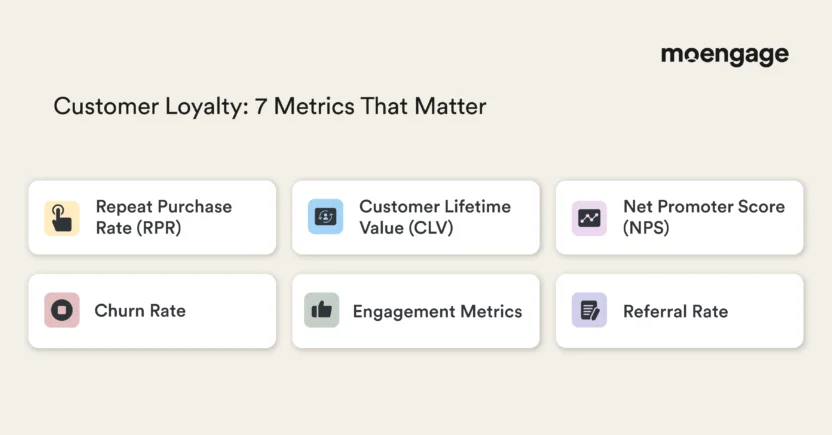
Running a loyalty program isn’t enough just by itself. You can hand out points, send offers, or set up tiers, but without keeping an eye on what’s actually happening, it’s mostly guesswork. Analytics help you see if customers are coming back, if they’re paying attention to your campaigns, and whether they really care about the program.
They show what’s working, what isn’t, and where you need to adjust. These KPIs are some of the best ways to track loyalty and figure out the real impact of your efforts.
- Repeat Purchase Rate (RPR): Measure how often a customer returns within a specific period. This shows whether your loyalty program is keeping customers engaged. High RPR indicates that your incentives and communications are effective.
- Customer Lifetime Value (CLV): CLV estimates the total revenue a customer will generate over their relationship with your brand. Loyalty programs directly influence this by encouraging repeat purchases and higher spend.
- Net Promoter Score (NPS): NPS measures the likelihood that customers will recommend your brand. A higher NPS usually signals strong emotional loyalty, which often translates to repeat business and referrals.
- Redemption Rate: Tracks how often customers redeem their rewards. Low redemption may indicate confusion, lack of value, or disengagement. Adjust rewards, communication, or ease-of-use accordingly.
- Churn Rate: Measures how many customers stop engaging over time. A falling churn rate signals that your loyalty strategies are effective.
- Engagement Metrics: Customer engagement metrics include email open rates, app logins, or social activity related to loyalty campaigns. Higher engagement correlates with deeper loyalty and program success.
- Referral Rate: If your program encourages referrals, track how many new customers come through existing ones. Referrals are often higher-quality leads and more loyal from the start.
What is the expected lifetime value of customer loyalty and retention?
Depending on the industry and program effectiveness, loyalty programs generate 5-7x more revenue than what they cost. They increase customer lifetime value (CLV) by encouraging repeat purchases, upselling, cross-selling, and reducing churn.
Over time, these customers provide predictable revenue and often act as advocates, bringing in referrals at a minimal additional cost. That long-term payoff is why analyzing metrics, optimizing your program, and understanding what works is so important. Without that insight, it’s impossible to know which parts of the program are truly driving value.
5 Customer Loyalty Program Examples from Brands That Are Nailing Retention
The brands that excel in loyalty know that retention costs less than chasing new customers. Their programs are almost case studies in keeping customers coming back. From coffee chains to beauty brands, these programs show how rewards, personalized communication, and real value can turn occasional buyers into lifelong fans.
Here are some of the best customer loyalty program examples in action.
1. Starbucks: Starbucks Rewards
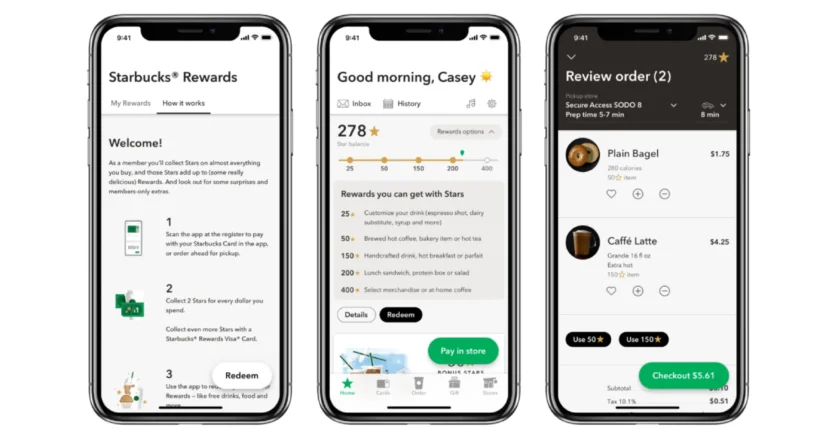
Source: https://about.starbucks.com/uploads/sites/9/2020/01/Starbucks-Rewards-1024×640.png
Starbucks Rewards runs on a simple points system. Every purchase through the app or a registered card earns Stars, i.e., 2 Stars for every dollar. Those Stars can be swapped for drinks, food, or merchandise. There are extra chances to earn through limited-time challenges, bonus Star days, and special promotions. Ordering ahead or getting delivery also counts, so nearly every visit adds up.
- How This Builds Initial Customer Loyalty: The program is free to join and immediately feels useful. A new member can order ahead, pay in the app, and start earning Stars without waiting. That early convenience matters.
- How This Increases Customer Loyalty: With more than 40 million members, the program leans heavily on gamification. Challenges and bonus Star events push customers to stop by more often, and once a habit forms, it’s hard to shake.
- How This Maintains Customer Loyalty Over Time: Exclusive games, chances to win free items, and members-only perks keep things from feeling stale. The app itself adds another layer of stickiness, since switching to another coffee chain would mean losing the convenience and the rewards at once.
2. Sephora: Beauty Insider Program
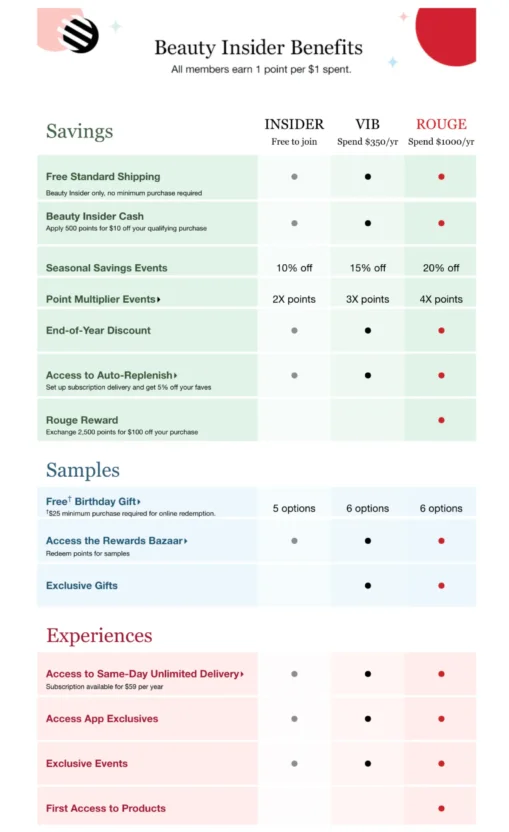
Link: https://blog.smile.io/content/images/2023/08/Sephora-Beauty-Insider-Benefits.png
Sephora’s tiered system is another customer loyalty program example that motivates members to increase spend and enjoy exclusive perks.
Sephora’s Beauty Insider works on a tiered system with three levels: Insider, VIB (Very Important Beauty), and Rouge. Members earn one point for every dollar they spend. Points can be traded in for limited products, experiences, or beauty classes.
On top of that, there are tier-based perks, like early access to sales, free birthday gifts, and special events. Rouge, the top tier, comes with 20% off during major sales. Across all tiers, there are also smaller but consistent benefits, such as free shipping and seasonal discounts.
- How This Builds Initial Customer Loyalty: The birthday gift is often the most-loved feature. It’s a small gesture, but customers call it out again and again in reviews. It feels personal, and it comes at no cost.
- How This Increases Customer Loyalty: The tiered structure motivates increased spending to unlock VIB ($350 annually) and Rouge ($1,000 annually) status, with each tier offering progressively better perks and exclusivity.
- How This Maintains Customer Loyalty Over Time: Seasonal savings events, end-of-year discounts, beauty classes, and community features make sure members aren’t only showing up at checkout. There’s always another reason to stay engaged.
3. Amazon: Amazon Prime
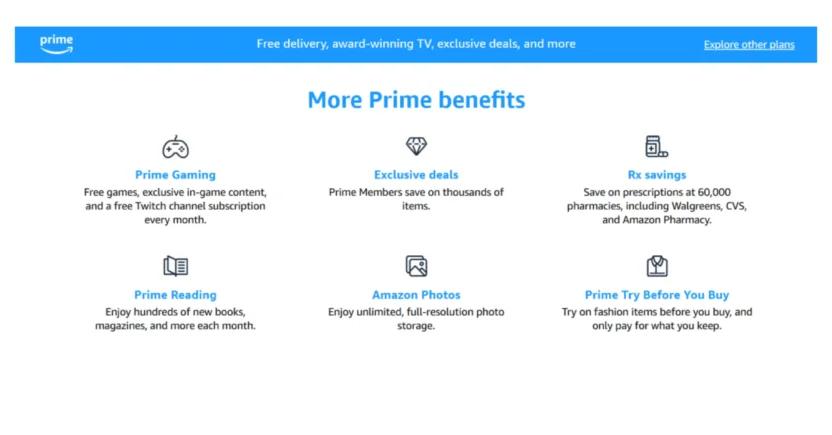
Source: https://influencermarketinghub.com/wp-content/uploads/2021/10/image4-5-1024×406.png
Amazon Prime is different from most other programs because it’s a paid membership. Customers pay $139 annually or $14.99 monthly. In return, they get a bundle of services, like fast free shipping, Prime Video, Prime Music, exclusive deals, and early access to Lightning Deals.
According to Statista, by 2024, there were more than 180 million Prime members in the U.S. alone. Over time, Prime has stretched beyond shipping perks to include groceries, pharmacy services, and entertainment.
- How This Builds Initial Customer Loyalty: The upfront fee creates a kind of commitment. Once someone pays, they want to get their money’s worth, and the free two-day shipping often justifies the cost quickly.
- How This Increases Customer Loyalty: Prime covers shopping, streaming, music, and more, touching multiple parts of a customer’s life. Each added service makes the membership feel like it’s worth more.
- How This Maintains Customer Loyalty Over Time: Amazon keeps rolling out new perks, while events like Prime Day give members deals that outsiders can’t get. The sunk cost of the annual fee also plays a role, encouraging customers to renew their membership, rather than cancel.
4. Nike: NikePlus Membership
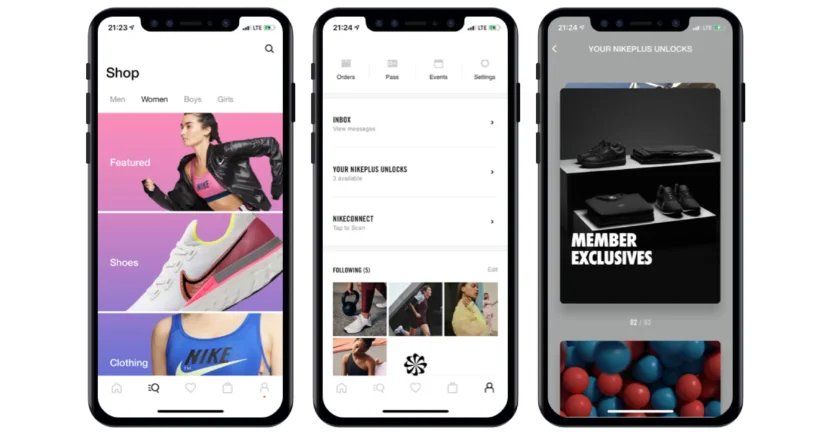
Source: https://miro.medium.com/v2/resize:fit:1400/1*Jt8-Fd8s6sx2kJ4xicqKtA.png
NikePlus, now just called Nike Membership, is free. The program goes beyond shopping by tying into fitness and community features. Members get free shipping, first access to limited releases, product suggestions based on their activity, and access to Nike’s Training Club and Run Club apps.
Some members also receive invites to special events. Everything works across Nike’s app ecosystem, so the program feels tightly integrated.
- How This Builds Initial Customer Loyalty: Since membership costs nothing, there’s no barrier to joining. Free shipping and app access give an immediate payoff.
- How This Increases Customer Loyalty: Limited-edition product drops create excitement and exclusivity. The personalized recommendations also help customers discover items that feel relevant to them.
- How This Maintains Customer Loyalty Over Time: Daily engagement through the fitness apps brings members back even when they’re not shopping. Events and exclusive product access keep them tied to the brand for the long haul.
5. Costco – Costco Membership
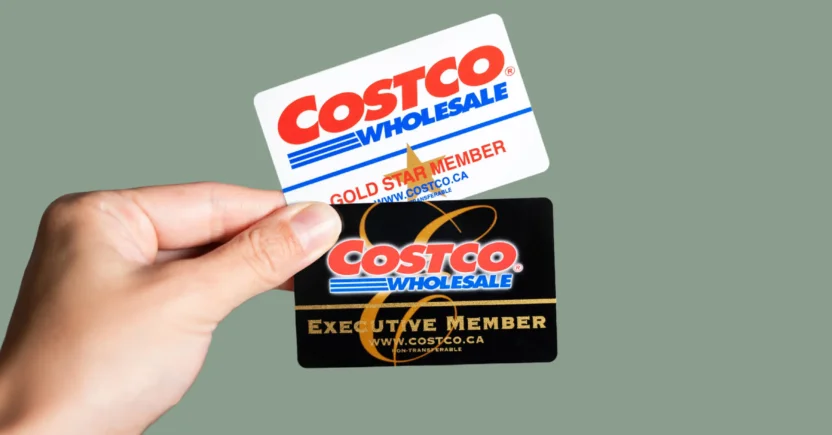
Costco runs on a membership-only model with two options: Gold Star at $65 a year, or Executive at $130. Executive members get 2% back on their purchases, capped at $1,250 annually, which often covers the cost of the upgrade. Membership opens the door to Costco warehouses, gas stations, pharmacies, optical care, and special pricing on bulk goods.
- How This Builds Initial Customer Loyalty: The membership fee creates immediate investment in the relationship, while bulk savings on the first few shopping trips typically justify the annual cost.
- How This Increases Customer Loyalty: Because the warehouses require membership to enter, customers commit by default. And since shopping is done in bulk, the trips are fewer, but much larger in value.
- How This Maintains Customer Loyalty Over Time: The cashback from the Executive tier is often enough to pay for the membership itself. Add in the extra services, like gas, pharmacy, travel deals, and customers find multiple reasons to keep renewing.
These customer loyalty examples illustrate how thoughtful program design, relevant perks, and ongoing engagement can move a casual shopper into a committed, long-term brand advocate.
Top 5 Customer Loyalty Software Companies to Help Build Your Program
Running a loyalty program today goes far beyond sending coupons or stamping cards. Strong customer loyalty program software tools mix data, omnichannel personalization, and automation so you can design comprehensive customer loyalty and retention strategies that customers actually want to stay a part of.
The five customer loyalty companies listed below each take a different approach. Some are better for Ecommerce, others for global scale, but all of them have features that help brands hold onto their customers for the long run.
1. MoEngage: Best for deep customer engagement & hyper-personalization
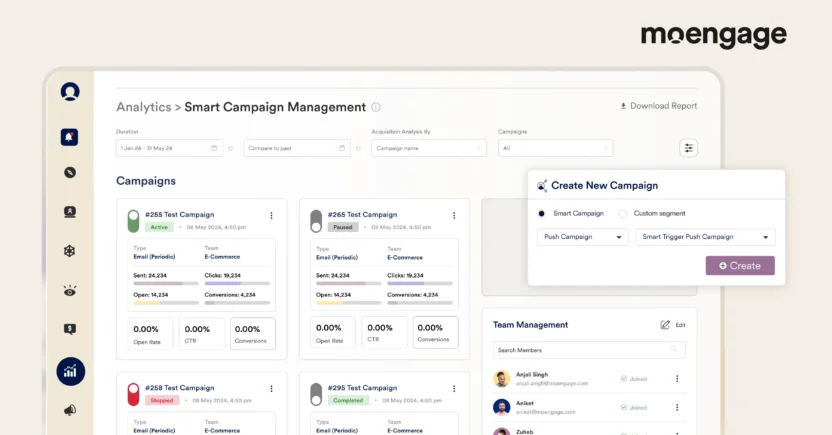
MoEngage remains one of the top customer loyalty companies for brands focusing on engagement and personalization. MoEngage is a Customer Engagement Platform that pulls together data from different sources, like apps, websites, email, SMS, and push. That gives you a unified view of each customer, making it easier for you to understand what customers are doing and when.
Brands can then segment customers by behavior, past purchases, or stage in the lifecycle and set up AI-driven marketing automation campaigns.
Tools include journey orchestration, predictive analytics, reward personalization, and live tracking of engagement or redemptions.
How It Will Help Build Customer Loyalty
- Predict churn early: MoEngage’s Sherpa AI points out customers who may be slipping away so you can send a reminder or an offer before they leave.
- Real-time personalization: Actions like browsing a product or leaving a cart trigger immediate responses. This way, customers see that the brand is paying attention.
- Cross-channel orchestration: Keeps email, push, and app notifications aligned so customers don’t get overwhelmed or confused.
- Lifecycle automation: From a welcome note on day one to a win-back campaign later, every stage of the journey can be covered without much manual effort.
2. LoyaltyLion: Best for flexible Ecommerce rewards & referrals
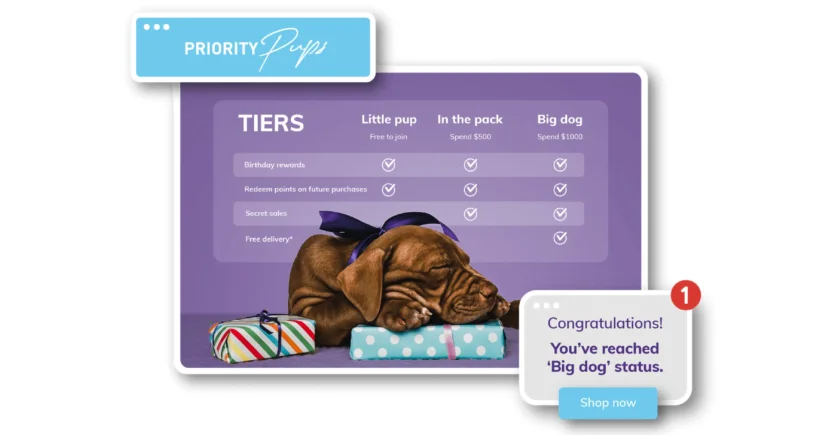
Focusing on Ecommerce, LoyaltyLion supports programs with points, tiers, VIP levels, and referrals. The platform integrates directly with Shopify, Magento, and BigCommerce to track behavior, rewards, and engagement. Brands can award points for more than just purchases—referrals, reviews, birthdays, and social shares are all options. For brands looking to merge advocacy with rewards, LoyaltyLion doubles as both engagement software and a customer loyalty solutions provider.
How It Will Help Build Customer Loyalty
LoyaltyLion keeps customers engaged through multiple ways to earn points, so activity continues beyond purchases. The Bronze, Silver, and Gold tiers motivate shoppers to reach higher perks, while the built-in referral tool makes it easy to bring in friends. Dashboards give a clear view of which rewards drive long-term value, helping teams adjust the program effectively.
3. Yotpo Loyalty & Referrals: Best for social proof & user-generated content
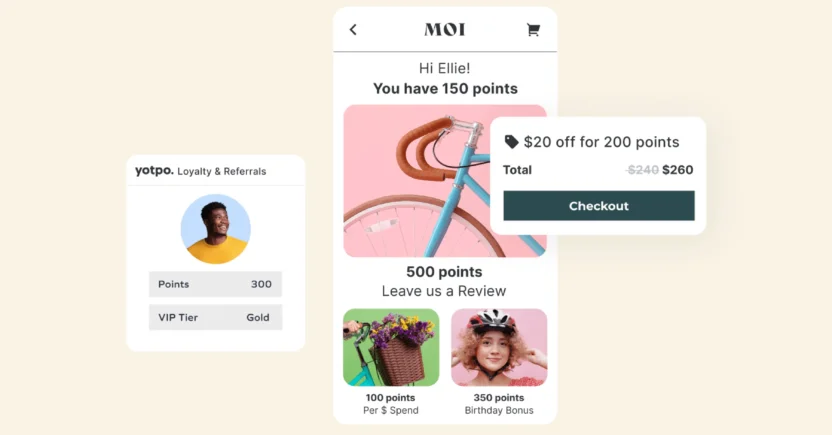
Yotpo combines loyalty programs with reviews, photos, and videos. Customers can be rewarded for posting content or referring friends. Campaigns stretch across email, SMS, and apps, with analytics measuring redemptions, referral success, and lifetime value. This way, Yotpo acts as a customer loyalty platform, connecting engagement directly to customer advocacy.
Recently, Yotpo announced it will be discontinuing its email and SMS marketing services by the end of 2025. Brands that rely on these channels will need to find alternatives to keep their campaigns running smoothly. For guidance on options and migrations, read our comprehensive article about Yotpo alternatives for email and SMS.
How It Will Help Build Customer Loyalty
Yotpo Loyalty & Referrals leans on customer advocacy by giving people points for things like writing reviews, sharing photos, or sending referrals. It ties in with email and SMS pretty smoothly, so the rewards don’t feel separate from the rest of the brand’s communication.
Customers usually like the mix of redemption choices, and the steady stream of user content ends up adding more life to the program, making it feel less about transactions and more about being part of the community.
4. Antavo: Best for enterprise-grade customization & omnichannel experiences
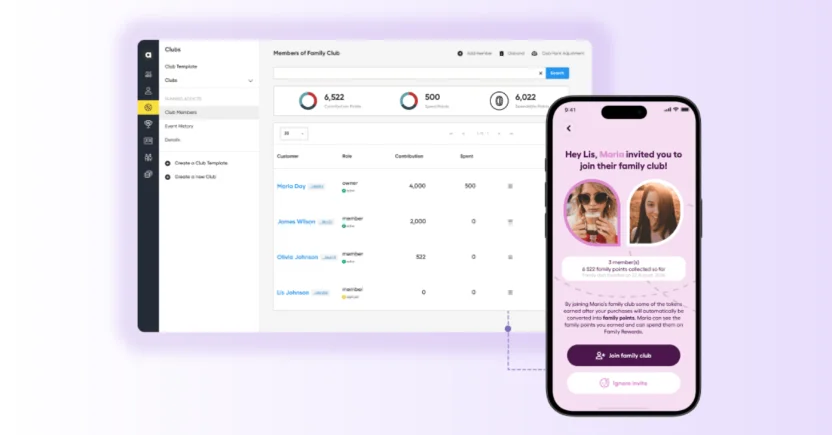
Antavo is designed for large brands that need complex programs. It lets companies create gamified elements like challenges, streaks, or badges, along with experiential rewards. It works across physical stores, websites, and apps, with APIs to connect to CRMs or ecommerce systems. For large brands, it’s one of the most robust customer loyalty solutions.
How It Will Help Build Customer Loyalty
Antavo focuses on giving brands the freedom to design loyalty programs that really fit their customers. You can set up unique rules, perks, and even gamified elements like streaks or challenges, which usually keep customers coming back more regularly.
The platform works across stores, websites, and apps, so the experience feels consistent no matter where someone interacts. Reports aren’t perfect, but they generally show which incentives resonate with different customer groups, helping teams tweak programs over time.
5. Capillary Technologies: Best for global brands & advanced analytics
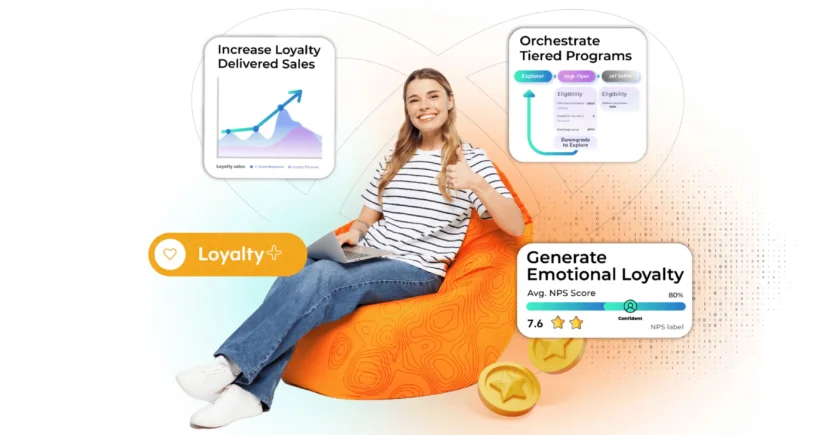
Capillary’s Intelligent Loyalty platform pulls customer data from all channels and across regions. It uses AI to predict behavior, recommend rewards, and run automated campaigns on email, SMS, apps, and in-store systems. Its analytics analyze how well the program performs at scale, from engagement to ROI. Its infrastructure supports millions of members, making it one of the leading customer loyalty card software solutions for global operations.
How It Will Help Build Customer Loyalty
Capillary Technologies provides brands with a unified view of customer behavior across regions, keeping rewards consistent. Machine learning spots patterns, like likely reorder times, while automated campaigns run via email, SMS, and apps to maintain engagement. The platform handles large member bases and complex reward catalogs without slowing down, keeping programs running smoothly as they grow.
Each of these platforms solves loyalty in a different way; some lean on engagement, some on gamification, and others on scale. The right choice depends less on features you admire from a distance and more on what matches your customers’ behavior and your team’s capacity to manage it.
Customer Loyalty Guide: Closing Thoughts
Customer loyalty grows when you pay attention to your customers and actually act on what matters to them. MoEngage can easily help you with that.
It lets you set up campaigns, send messages, give rewards, and track behavior, all in ways that feel relevant, not forced. You can see what works, adjust as you go, and keep customers engaged over time. Schedule a demo, and you’ll see how it changes the way customers respond.

